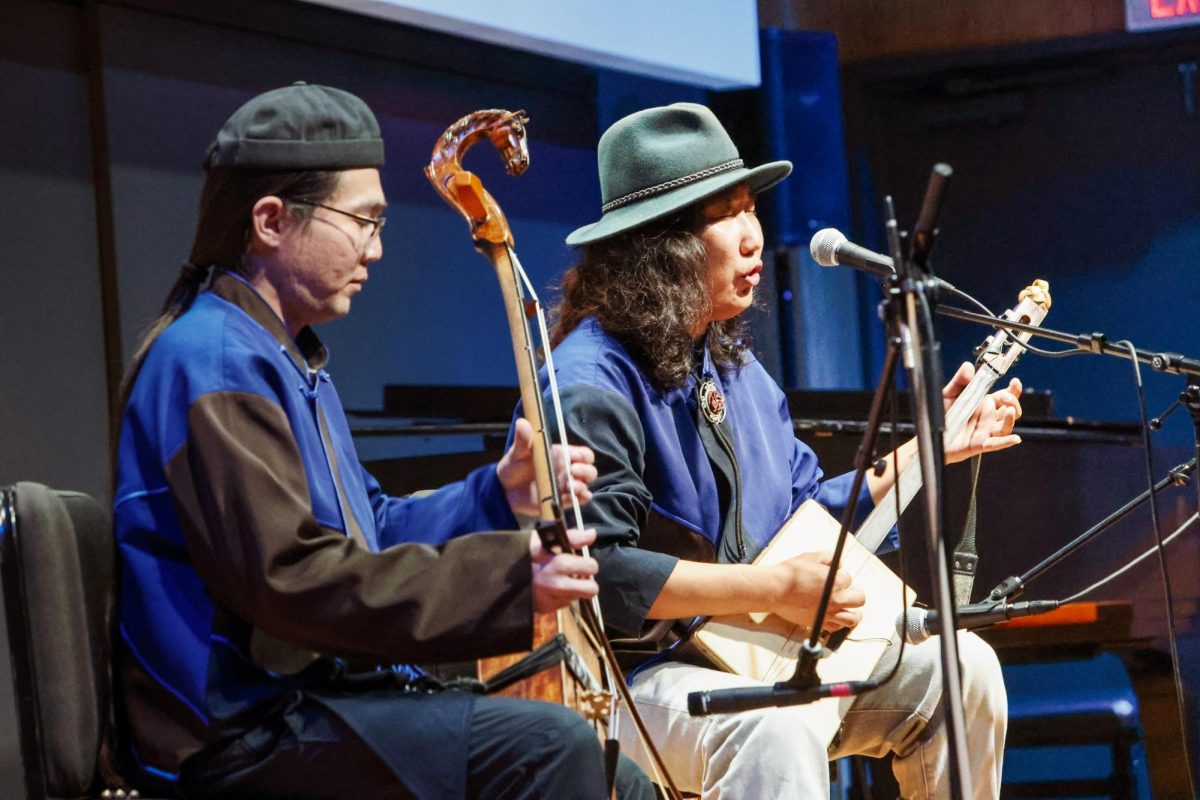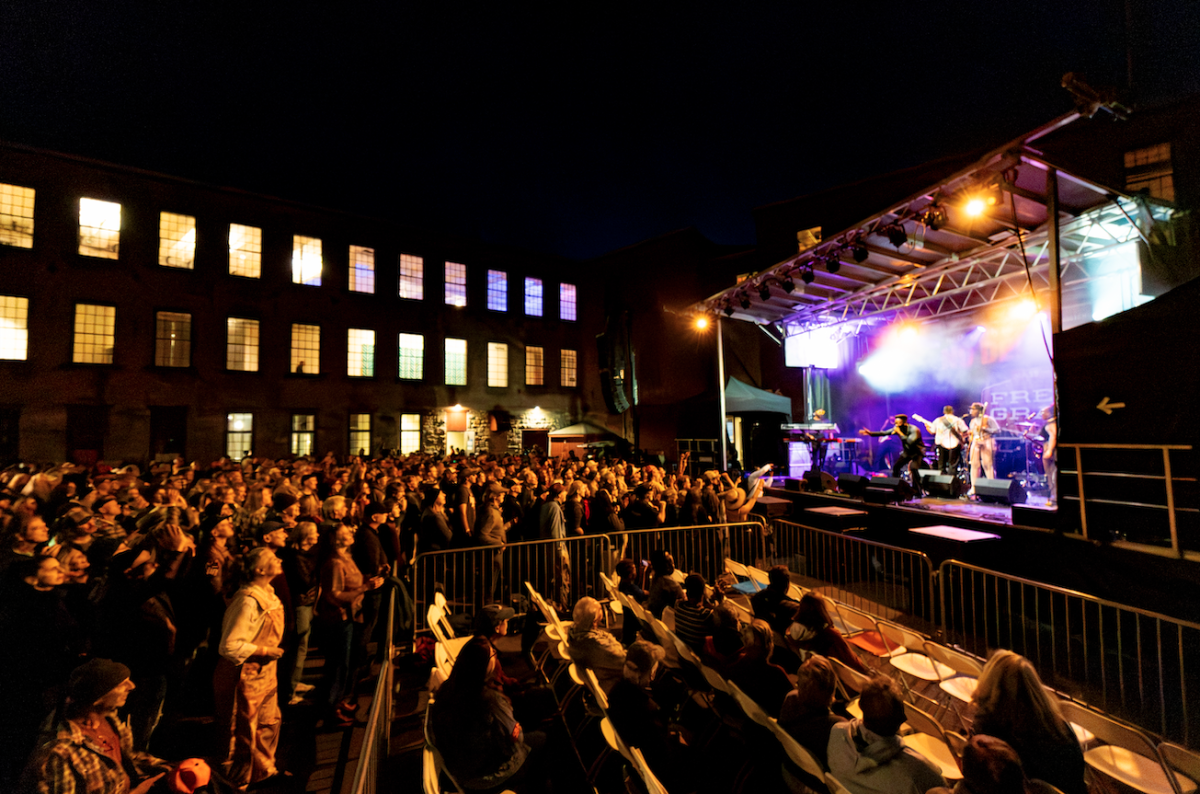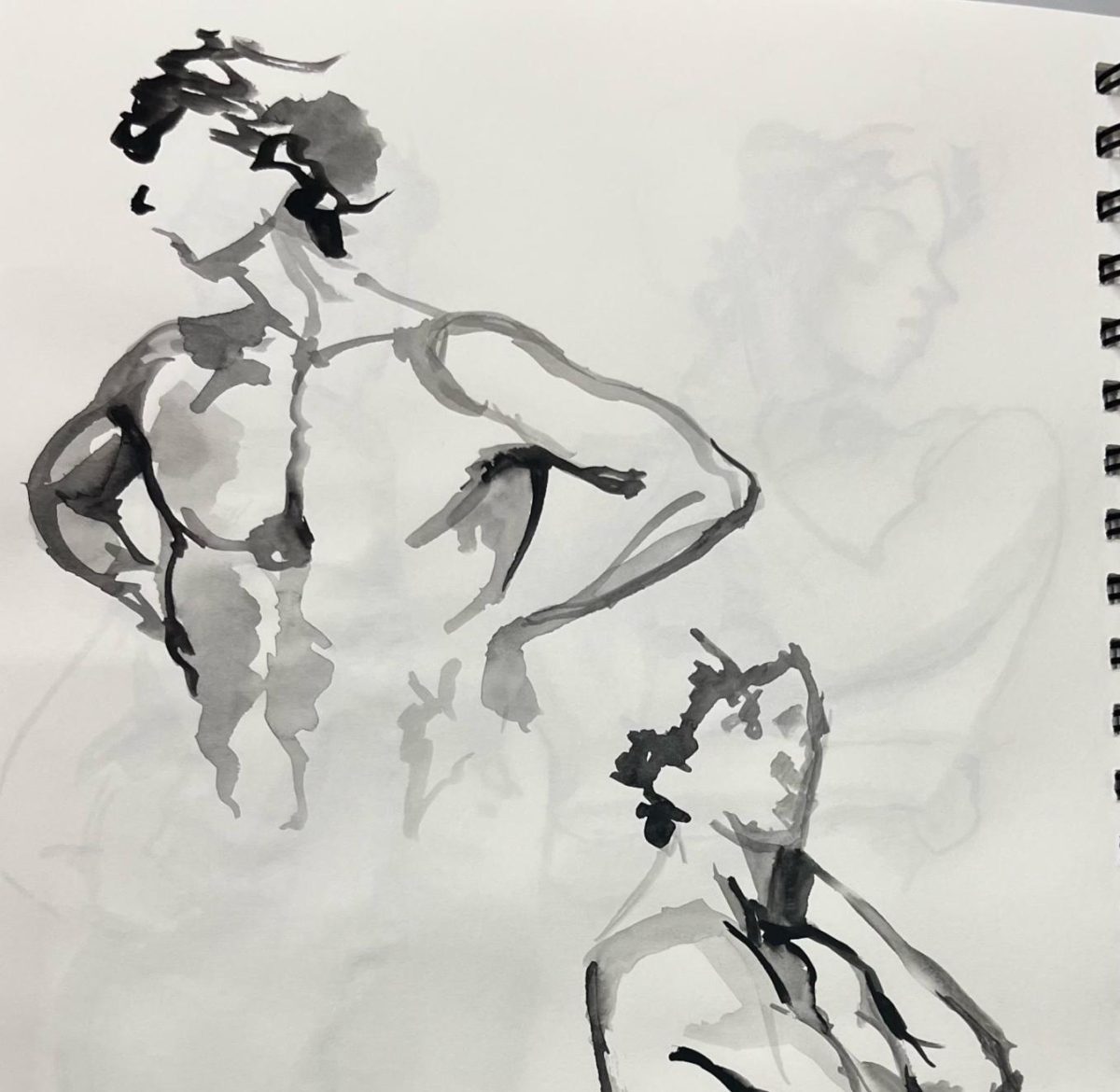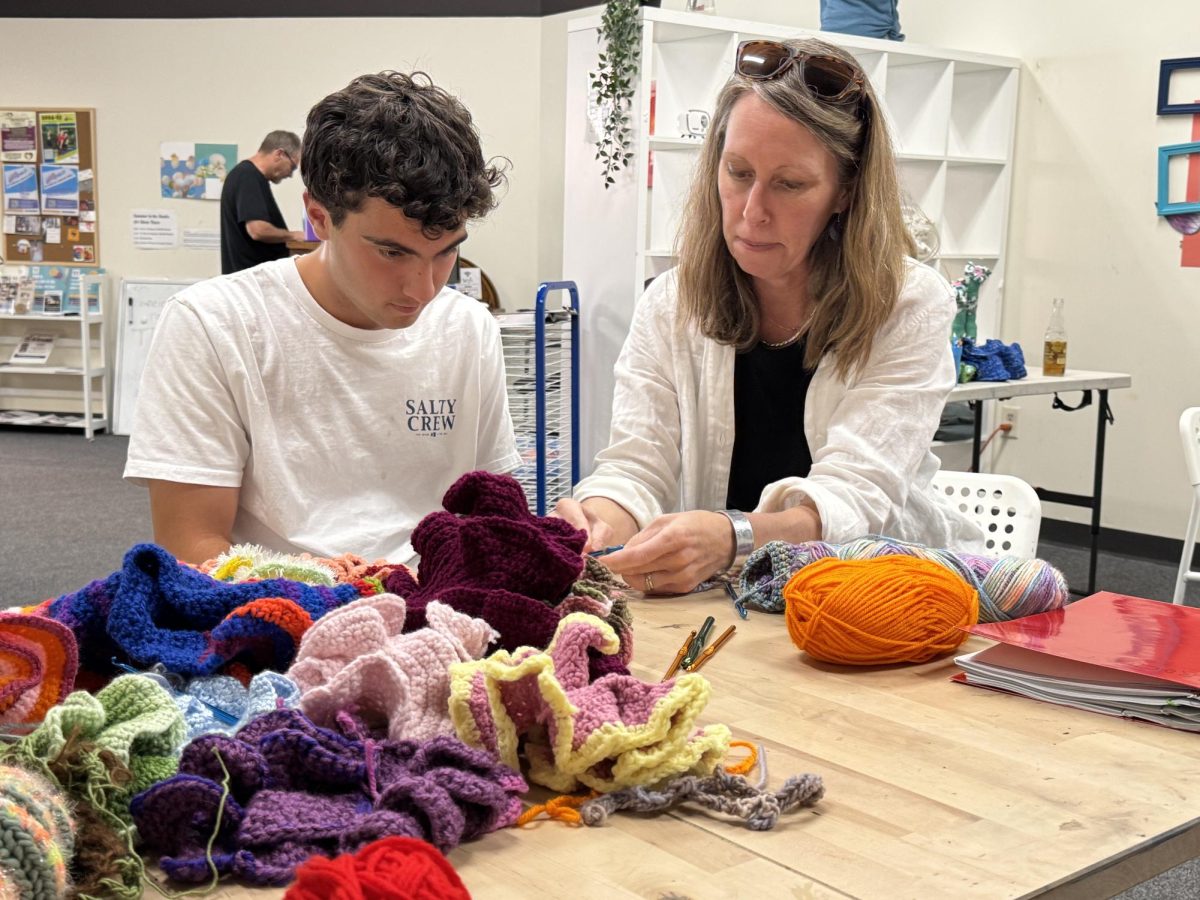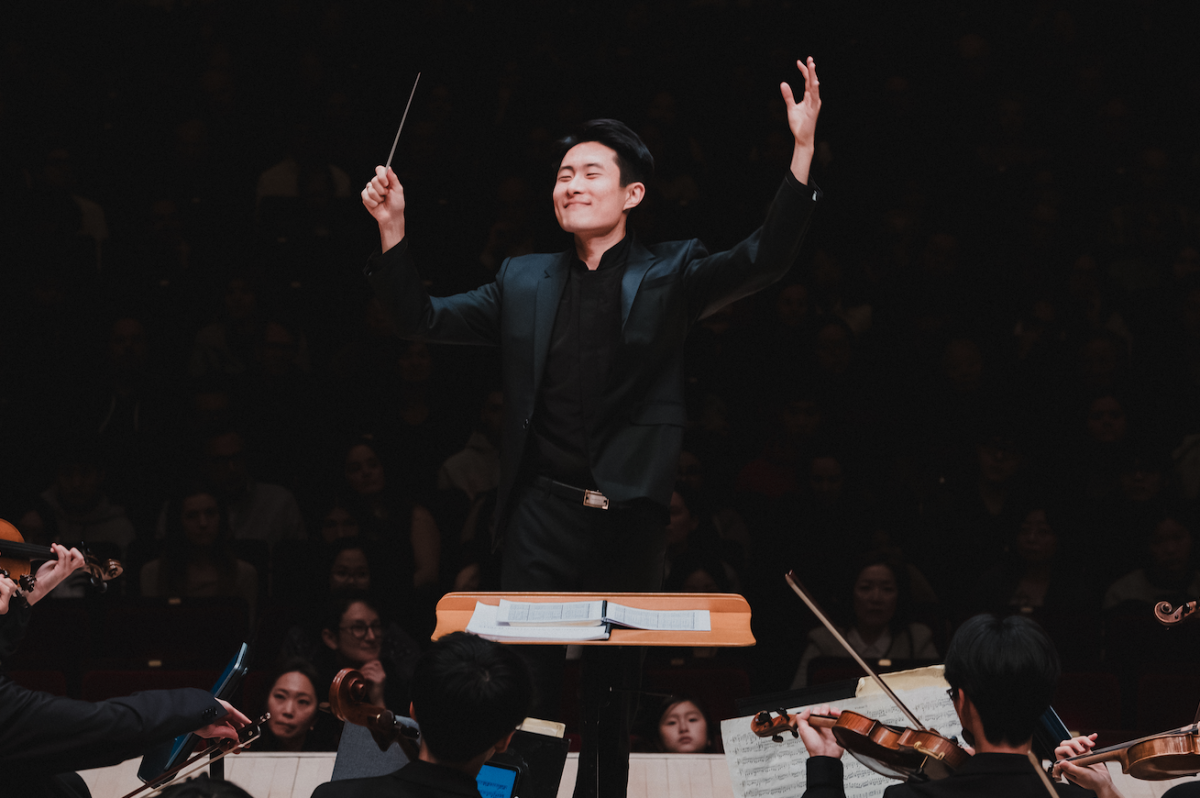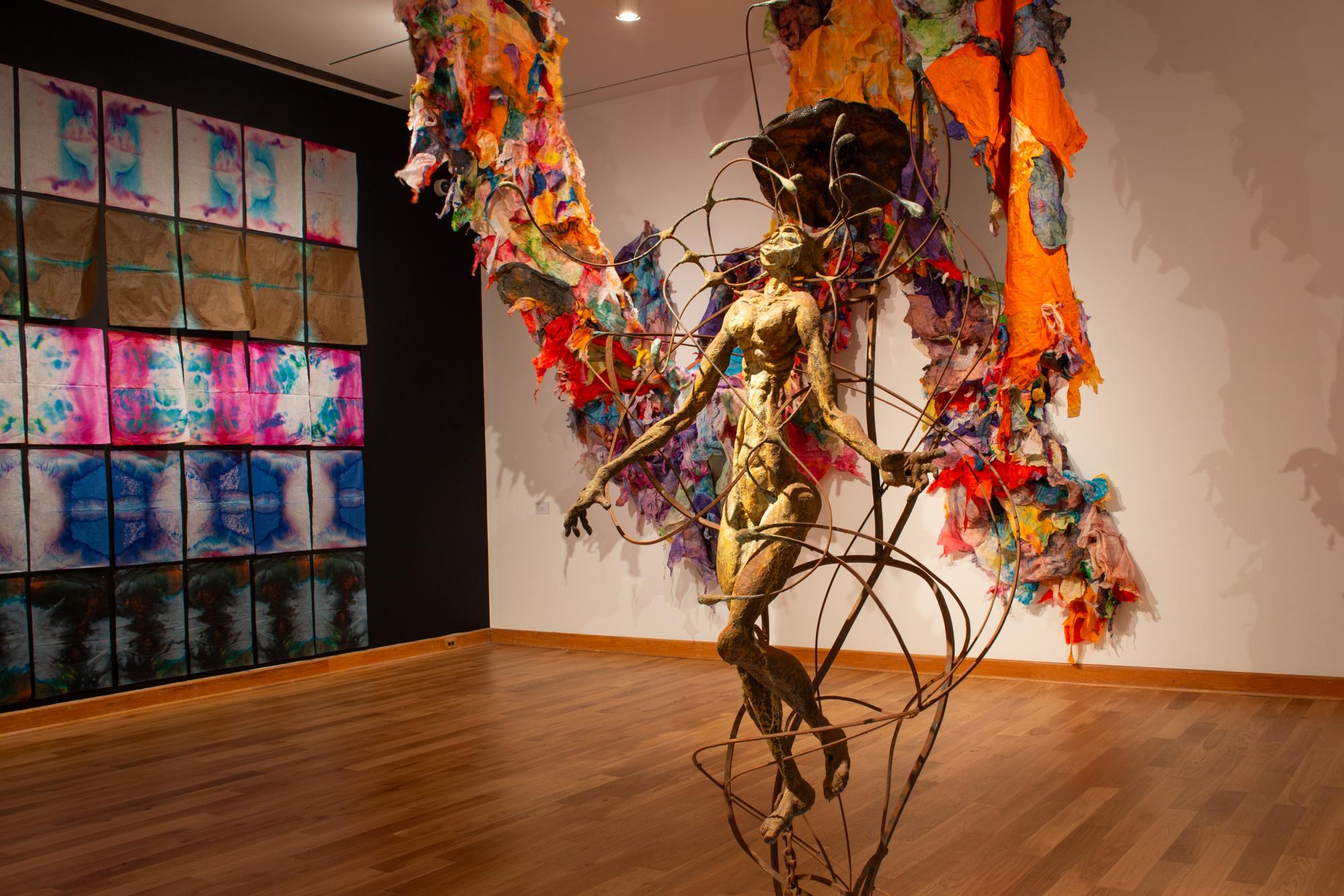
The Williams College Museum of Art (WCMA) celebrated the opening of “Emancipation: The Unfinished Project of Liberation” on Friday, Feb. 23. First conceived in 2018 and organized primarily over Zoom, the exhibition marks the 160th anniversary of the Emancipation Proclamation and features commissioned works by seven artists: Sadie Barnette, Alfred Conteh, Maya Freelon, Hugh Hayden, Letitia Huckaby, Jeffrey Meris, and Sable Elyse Smith.
The exhibit focuses on artists’ responses to John Quincy Adams Ward’s 1863 bronze sculpture The Freedman from the Amon Carter Museum of American Art in Fort Worth, Texas, and was curated by Margaret Adler ’07, curator of paintings, sculpture, and works on paper at the Amon Carter Museum of Art and a 2021 Fellow of the Center for Curatorial Leadership; Marutia N. Poole, director and chief curator at the Newcomb Art Museum of Tulane University and former Mellon Curatorial Fellow at WCMA; and Destinee Filmore, assistant curator in modern and contemporary art at the Metropolitan Museum of Art and Mellon Curatorial Fellow at WCMA from 2021 to 2024. They found the sculpture particularly notable and included it in the exhibition, as they explained at the press opening and subsequent Q&A.
“It’s one of the first depictions of a Black man in bronze in the United States, and it was made before the end of the Civil War, so before the outcome of the war was certain,” Adler said. The Freedman depicts a man seated on a tree stump, his right hand bracing the stump and a set of unlocked shackles dangling from his left wrist.
“Ward’s work is meant to represent a Black man liberating himself, but the exhibition also prompts a broader conversation about what emancipation means within the context of the United States and the various prices that people will have to pay,” Poole said.
Artists produced a range of pieces in response to the original sculpture. Huckaby, whose work depicts photographs of textiles overlaid with people’s silhouettes, said she was inspired by materials passed down in historic freedmen’s villages like Africatown in Mobile, Ala. “The ability to sustain and to keep community across generations is a really powerful idea that Letitia wanted to promote, to show the significance of what has been retained,” Poole said of Huckaby’s work.
Barnett also drew from the idea of familial inheritance for her pieces: As the daughter of a founding member of the Compton, Calif., branch of the Black Panther Party, she graffitied over a reproduction of the FBI file on her father — which amounted to over 500 pages — with glitter, pink, and Hello Kitty iconography.
The piece physically paints over the expectations and depictions of Black American men found in the files, who were policed through systems of surveillance. Instead of images of militant masculinity, her work draws from aesthetics inspired by the queer nightclub her father owned in San Francisco.
“This desire to exist in categories that do not fit within the structure of what people set for us has been done before, and there are models that are out there even under extreme pressure,” Poole said.
Meris’ sculptures insert plaster molds of his body into machines that, when turned on in the exhibit, grind the molds into dust that settles on the exhibit floor. Using architectural materials like cinder blocks, Meris renders the relationship between Black individuals and the state as one of erosion and reduction. As the plaster is ground down by the apparatuses of the machine, Meris uses the dust to create new art, capturing the debris in abstract and haunting photographs. Meris’ participation in the exhibition is also an acknowledgement of diasporic Blackness: Meris was born in Haiti and raised in the Bahamas before moving to the United States.
Poole provided reflections on the Black diaspora. “For those who migrate from other contexts, once they become a part of communities in the United States, often their identities are reduced to racial categories or physical signifiers,” she said. “This is important to talk about this as a fundamentals of the American experience, and what it means to be a full citizen in our society.” At the exhibit’s opening, she also highlighted slavery and emancipation as a diasporic experience; the Haitian Revolution, for example, inspired slave rebellions across the American South.
The call-and-response structure of the exhibit where contemporary artists echo and expand on historic work is essential to the idea of liberation as ongoing. This fluidity parallels the trajectory of the exhibition itself: It began at the Amon Carter in spring of 2023, then relocated to the Newcomb Art Museum at Tulane University that fall, before coming to WCMA this month. At each stop, the exhibition has merged with archival pieces and motifs reflecting the surrounding culture — Adler and Filmore compared the hot pink walls at the Amon Carter to the stark, white aesthetics of New England.
The exhibition’s focus on process, not product, is found in both its presentation and material. “The methodology is different because this is a traveling show, so each venue is allowed to add additional materials to supplement the show, to make it relevant for their audiences,” Poole said.
“If you were to see this at MASS MoCA it would be a totally different show,” Adler added. “Artists understand precedent, and they understand history. We think of them operating in a vacuum, and, in fact, that’s not the case. There is a connectedness in terms of subject matter and in terms of artistic production that is on a continuum.”
In Williamstown — the only location to which the exhibit will travel beyond the American South — Filmore incorporated local history into the exhibition by working with Chapin Librarian Anne Peale to pull pieces from Special Collections, contextualizing the exhibit within New England’s specific relationship to slavery and liberation. At WCMA, the exhibit includes a copy of the Emancipation Proclamation, the original print copy of Frederick Douglass’ 1852 Oration, and an engraving from Ellen Craft, a biracial woman who disguised herself as a white man to travel through Boston into Canada for freedom. It also includes a room on the 54th Massachusetts Regiment, the second African-American regiment that served for the Union Army during the Civil War, with members from Pittsfield, North Adams, Bennington, and Williamstown.
Ultimately, “Emancipation” constitutes a reflection on the liminality of liberation, depicting freedom as a condition that changes by region, and continues to interact with stifling structures of power. “Emancipation,” as an exhibition and a goal, becomes a complicated welding of the past and present of Black American subjugation and resilience.
“Emancipation: The Unfinished Project of Liberation” will be on display at WCMA through July 14, 2024.




